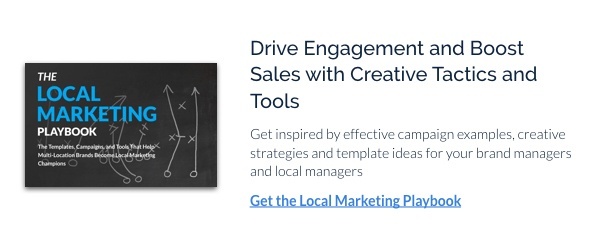Today, the U.S. accounts for 53.2% of the global stock market. The U.S. market may be the largest, but it certainly isn't the only contender. As the digital age continues to connect the global community, businesses have found it increasingly easy to do business internationally. Recent technological advancements, attractive tax incentives, and diversified revenue streams mean more and more brands have expanded into global markets.
There are a number of challenges that these growth-oriented brands face when growing internationally, however. For example, China has emerged as the world's second-largest economy with an average annual economic growth of 10% over the past 30 years. However, bureaucratic red tape and government regulations are just a few of the barriers these companies face when expanding into Chinese markets.
If a key business objective is to grow in China, marketing must be strategically optimized for that specific locale. To reach new audiences from around the world, companies need to speak to users in their native language – literally. In these instances, translation and localization are integral components of the marketing process. That's why the world's leading distributed brands are increasingly using the power of Local Marketing Automation (LMA) to successfully support multilingual marketing initiatives.
Steps Distributed Brands Take to Deliver Multi-Language Marketing
To succeed in global business, companies must develop appropriate procedures and strategies to effectively analyze the international marketplace. With careful analysis and strategic planning, marketers can be equipped with greater clarity to launch into international markets. Here, a healthy dose of customer data and business intelligence grants marketers with the knowledge and insight to deliver a tailored marketing approach. Before deploying multi-language marketing, brands must consider the following:
- Business and Communication Objectives: Developing an effective international marketing strategy begins with a proper assessment of business and communications objectives. What is the brand trying to accomplish by expanding into global markets and does the organization's communications efforts align with those goals? For international franchisees, it's important to understand how localized marketing efforts complement the brand's overall marketing strategy.
- Translation and Localization: For brands looking to expand their business abroad, language and localization are key. If you really want to speak the customer's "language", can you actually speak with them in their native tongue?
- Simplify Asset Management: Managing an international marketing campaign requires expert organization and management of mission-critical marketing assets. How do the software systems that help manage these marketing assets support multi-language content development, implementation and management?
To learn how the most successful distributed brands scale, we recommend 4 Ways to Scale Your Multi-Location Brand with Local Marketing Automation.
The Challenges of Deploying Multi-Language Marketing for Multi-Location Companies
For enterprise marketers, competing across international markets presents a variety of localized communications challenges. The most obvious challenge is to produce, manage and deliver messaging in the primary language of the target audience.
"Machine learning and translation memory tools provide a great deal of accuracy and almost provide perfect translations," says Forbes' Contributor, John Winter. "However, be cautious and ensure that all translations are approved by a local agency to avoid any potential embarrassment." For example, when Pepsi debuted the slogan "Pepsi Brings You Back to Life," it was translated into Chinese as "Pepsi Brings You Back from the Grave." Not sure that's quite the kind of "energizing kick" the brand marketers at HQ thought they were going to share with their customers.
Distributed brands must be able to support local marketing affiliates by overcoming these multi-language marketing hurdles:
- Asset Creation and Distribution: In a multi-lingual environment, asset creation and distribution is inherently different than in a single language climate. The world's largest multi-location brands typically produce a variety of evergreen marketing materials including print stationary, advertising material, social media posts and landing pages. However, corporate marketers shouldn't assume that they know best when it comes to language and dialect. Instead, the work of translating these assets should be deferred to local affiliates. Within this framework, enterprise marketers have to give local affiliates the autonomy to deliver localized messages in the appropriate language.
- Brand Consistency and Compliance: Keeping brand consistency is difficult when marketing in different languages. Local marketing affiliates must "trans-create" messaging from one language to another while maintaining the brand's original intent, style and tone. In this instance, headquarters must employ a bilingual staff to assist with regional dialects and linguistics. First, identify some of the factors of the brand that cannot be translated. Then, identify major areas where word-for-word translation (maybe done by a translation service) would be good enough. Finally, analyze any gaps. Are there specific campaigns where direct translation does not resonate with the target audience due to cultural or social nuances? Brands have to give local marketing affiliates the flexibility to adapt this messaging as needed.
- Usage Rights and Liability: Was a particular photo or icon only approved for use in English? Can it be used across languages or nationalities? Sometimes marketing decisions that are fine in one context are completely unacceptable in another. Even worse, getting it wrong can carry big legal implications. For example, featuring children with powersports equipment in advertising is common in the U.S. where ATVs and off-roaders are often not covered by the same rules as on-road vehicles. But that same creative would be illegal in France where the rules (and the culture) are quite different. Dealing with these legal restrictions isn't just a linguistic problem, but it certainly coincides with language when it comes to marketing and getting the message right.
How Local Marketing Automation Creates Multi-Language Marketing Success
Local Marketing Automation tools are designed for branding and messaging precision. The world's most effective CMOs are leveraging the power of marketing software to deliver multi-language marketing across global markets. By selecting a software system that supports end-to-end local marketing support, brand managers can scale their resources to support quality multi-language marketing success no matter what country or market it's in.
CampaignDrive by Pica9 empowers local marketing affiliates to make the right messaging and design choices when they're running a local campaign. Convenient in-language translations within the system interface means users have a more natural experience in their own language. Even better is the ability to link content from multiple languages together based on theme or topic. This means that local users can access all the equivalent content for any given dialect the brand is marketing in just by choosing the same subject matter and specifying a new language.
Learn how the world's most successful distributed brands use Local Marketing Automation to create winning local marketing strategies. Download our free e-book: The Local Marketing Playbook: The Templates, Campaigns, and Tools That Help Multi-Location Brands Become Local Marketing Champions. 




